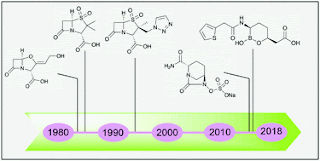Surgical Robotics Market Global Demand, Latest Technology and Outlook 2020 to 2030
The Global Surgical Robotics Market size was valued at USD 66.02 billion in 2019 and is predicted to reach USD 158.70 billion by 2030 with a CAGR of 8.3% from 2020-2030.
Surgical Robotics lead to minimally invasive procedures with high precision, minimal incision, reduced blood loss, lesser pain, and quicker healing time, as compared to traditional surgical procedures. In robotically assisted surgeries, the surgeon controls overall surgical procedure by manipulating the self-powered, computer aided robot, that comprises of miniature surgical instruments mounted on its robotic arms. Surgical robots are commonly used in minimally invasive surgery, remote surgery, and unmanned surgery. The increasing commercialization of surgical robots consequently propagates the growth of global surgical robotics market.
Access Full Description of this report at:-
https://www.nextmsc.com/report/surgical-robotics-market
Top Companies: Medtronic plc, Smith & Nephew Plc. (Blue Belt Technologies, Inc.), Intuitive Surgical, Inc., Auris Surgical Robotics, Inc. (Hansen Medical Inc.), Stryker Corporation (Mako Surgical Corp.), Renishaw plc, Kuka Ag, Mazor Robotics, Zimmer Biomet Holdings Inc. and Think Surgical Inc. and others.
The global surgical robotics market share has been analyzed based on component, surgery type and geography. Based on component, the market is segmented into systems, services, and accessories. Based on surgery type, the market is divided into gynecology surgery, urology surgery, neurosurgery, orthopedic surgery, general surgery, and other surgeries. Geographic breakdown and analysis of each of the previously mentioned segments include regions comprising Europe, North America, Asia-Pacific, and RoW.
Request sample copy of this report at:-
https://www.nextmsc.com/Surgical-Robotics-Market/request-sample
North America region dominated the global surgical robotics market in the past, and is expected to maintain this trend throughout the forecast period, accounting for the major market share. This is attributed to higher investments by regulatory bodies to adopt advanced surgical robotics systems, well-established healthcare infrastructures with technologically advanced healthcare amenities, and presence of key market players in this region. Asia Pacific region is expected to demonstrate a substantial growth in the global surgical robotics market, growing with the highest CAGR values throughout the forecast period. This is due to increase in medical tourism, favorable reimbursement policies, and untapped market opportunities offered by the emerging economies present in this region.
About Next Move Strategy Consulting:
Next Move Strategy Consulting is an independent and trusted third-platform market intelligence provider, committed to deliver high quality, market research reports that help multinational companies to triumph over their competitions and increase industry footprint by capturing greater market share. Our research model is a unique collaboration of primary research, secondary research, data mining and data analytics.
We have been servicing over 1000 customers globally that includes 90% of the Fortune 500 companies over a decade. Our analysts are constantly tracking various high growth markets and identifying hidden opportunities in each sector or the industry. We provide one of the industry’s best quality syndicate as well as custom research reports across 10 different industry verticals. We are committed to deliver high quality research solutions in accordance to your business needs. Our industry standard delivery solution that ranges from the pre consultation to after-sales services, provide an excellent client experience and ensure right strategic decision making for businesses.
For more insights, please visit, https://www.nextmsc.com



Comments
Post a Comment